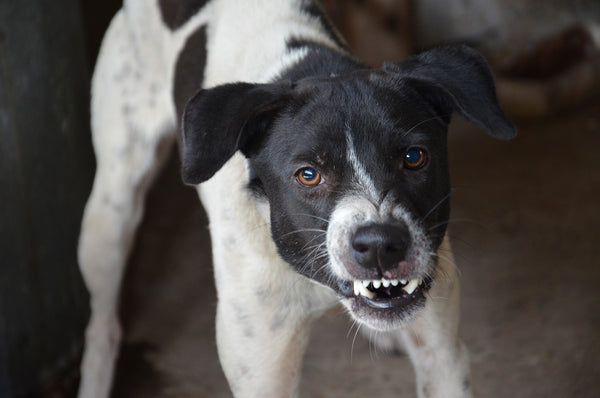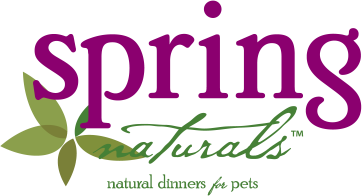
Food Aggression in Dogs
Is your dog starting to be aggressive or protective around his food bowl? Food aggression in dogs is somewhat common, and even understandable in some cases. Who really wants to share their food, after all?
However, if your dog is showing signs of food aggression, it is really important to talk to a professional about how to end the behavior.
Without intervention. this type of aggression can grow into a serious problem. Dogs that become aggressive can injure their owners, children, or other pets in the house.
What does food aggression actually look like?
If your dog has any of these behaviors, then it might be food aggression:
- Growling if you approach while he’s eating
- Raising his hackles (the hairs on his back) when a person or other dog passes by while he’s eating food or a treat
- Growls when another dog attempts to eat from his food bowl
- Lunges when you attempt to take away a food treat, like a bone
- Freezes and looks out of the side of his eyes when anyone walks by the place he is chewing on a food treat
- Bites you or anyone who pets him while he’s eating
Why might some dogs become food aggressive?
It might seem natural for any animal to protect its food. But for domestic pets, it’s a dangerous behavior to live with.
We might expect dogs that have been living in a crowded environment, such as in a shelter, to have more food aggression than dogs who were raised in a typical home environment. In fact, 20% of shelter dogs show traits of food aggression. Furthermore, 30% of dogs adopted from a shelter had food guarding or aggression, according to survey of their owners. (https://www.appliedanimalbehaviour.com/article/S0168-1591(13)00181-0/fulltext)
But what about dogs in the wild, who may not have much competition from one another, but who have less access to quality meals? Dr. Sophia Yin, a veterinarian and dog behaviorist who has studied dog behavior thoroughly, says that wild dogs, such as those in Bali or Costa Rica, definitely show food aggression. “They may defend food with the vigor of a dog whose life depends on it. This food defense behavior may then just become a habit whether the dog's hungry or not.”
Since this is apparently an innate behavior, Dr. Yin warns us that “Pet dogs can develop the same behavior starting in puppyhood, especially if they experienced strong competition for food.”
Some situations that might teach a perfectly happy, healthy dog to be food aggressive include:
- Trauma, such as accidents, a fight with another dog, natural disaster, war
- Long periods of stress, such as moving, getting a new owner, being abused,
Any of these could make a dog protective of food.
There are also genetic components to aggression that would cause a dog with none of the above stressors become aggressive around food.
First, Rule Out a Medical Problem
Take your dog to a vet. Let them know you’ve been observing food aggression. There could be a medical problem that might cause him to be anxious or in pain while he’s eating. Dogs that have an infected tooth or any dental issues could be in pain while they are eating. Dogs that are in pain are much more inclined to be defensive, feel threatened, or over-react with aggression when approached.
Other things you may not have considered include vision problems. Dogs that have poor eyesight could feel more threatened when they are eating because they cannot see their surroundings. Hearing problems can also make dogs feel vulnerable or threatened while their head is in a food dish.
If your dog has a thyroid imbalance, it could make him more aggressive than usual as well.
Joint pain is another reason a dog might be more aggressive while they are eating. The position in which they must stand in order to eat might make them physically uncomfortable.

Training Tips for Food Aggression
There are several training techniques that can help stop food aggression, but it’s important to work with a professional in dog behavior to know the right methods to use for your particular situation. You could easily be injured by an aggressive dog. Children and other pets can also get seriously injured in the process, as an aggressive dog is very unpredictable.
Depending on the severity and characteristics of your dog’s food guarding, it may be recommended to try one of the following strategies.
- Desensitization to seeing other people and pets nearby when a dog is eating
- Creating a positive association between people and food
- Training with food as a reward for specific, non-aggressive behaviors
First Steps to Take if Your Dog is Becoming Food Aggressive
If your dog is aggressive around his food, it’s important to manage the problem safely until a professional can help. You need to make sure that you, anyone else in the house, and other pets in the house are all safe. Feed your dog in the yard to separate him from the rest of the family during meals. Or, feed him in his crate.
It is especially important when you have children living in your home. Children do not recognize the danger when approaching a dog (especially their familiar pet) and can easily be bitten by a dog protecting his food.
Also, your dog might be aggressive around other items – not just food. So be cautious when giving treats, toys, and bones.
How To Find Professional Help for Food Aggression
Most people don’t realize that there are different types of dog training. It’s important when dealing with canine aggression to find an experienced, trained professional.
Talk to your veterinarian. Some veterinarians take additional specialty training in vet school for behavior modification. If your vet is not specialized in behaviour, he or she might have the information for the nearest canine behaviourist.
Experts in dog behaviour who are specifically trained in behaviour modification are called behaviourists. Behaviourists who are specifically trained in this way receive special certification, so you can search for “certified dog behaviorists” in your area.
Some dog trainers specialize in aggression or resource-guarding, too. They may not be fully certified behaviorists, but if they have a lot of experience working with aggressive dogs or what we call “resource-guarding,” they will be prepared to help you and your dog.
Whether your dog growls a little when you approach him at his food bowl or downright attacks another pet, food aggression should be dealt with immediately. There is no simple training solution for food aggression, but be sure to start by talking to your veterinarian. You can first rule out medical problems,then seek professional help from a vet specialized in behaviour, a certified behaviourist, or a dog trainer who specializes in dog food aggression training techniques. Any of these professionals should know how to stop food aggression in dogs.
With patience, time, and professional help, food aggression in dogs CAN be solved!
Liz London is a certified dog trainer through the Certifying Council of Professional Dog Trainers (CPDT-KA) & the Karen Pryor Academy (Dog Trainer Foundations Certification) with regular continuing education courses from the top animal trainers from all over the world, including Michele Pouliot, director of training for the Guide Dogs for the Blind. She has trained zoo animals, search & rescue canines, gundogs, and helped people raise happy, healthy, and well-behaved canine companions for over ten years.
Resources:
Food-related aggression in shelter dogs: A comparison of behavior identified by a behavior evaluation in the shelter and owner reports after adoption. Amy R. Marder, Anastasia Shabelansky, Gary J. Patronek, Seana Dowling-Guyer, Sheila Segurson D’Arpino. Applied Animal Behavior Science, September 2013.
https://www.appliedanimalbehaviour.com/article/S0168-1591(13)00181-0/fulltext
National survey of owner-directed aggression in English Springer Spaniels, Ilana R. Reisner, DVM, PhD, DACVB; Katherine A. Houpt, VMD, PhD, DACVB; Frances S. Shofer, PhD. Journal of American Veterinary Medical Association. November 2005. https://admin.avma.org/News/Journals/Collections/Documents/javma_227_10_1594.pdf
Yin, Sophia. “Treatment of food possessive dogs is about finesse, not force.” https://drsophiayin.com/blog/entry/treatment_of_food_possessive_dogs_is_about_finesse_not_force/

Post a Comment!